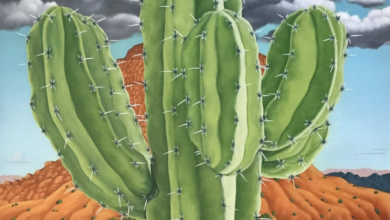
Artists seeking innovation and broader audiences turn to non-traditional art spaces as the art scene evolves. For those who want to be an artist, these unconventional venues offer a refreshing alternative to traditional galleries, providing unique opportunities for exposure and engagement. They play a big role in the art community, allowing creators to connect with the public in more intimate and impactful ways. Thus, exploring these spaces becomes essential for artists aiming to share their work with a diverse audience and make a significant impact outside conventional boundaries.
Understanding Non-Traditional Art Spaces
Non-traditional art spaces defy the conventional gallery model, offering artists innovative platforms to showcase their work. These venues range from digital realms to physical spaces not originally intended for art, such as cafes, parks, or online platforms. What sets them apart is their accessibility and the opportunity they present for artists to reach audiences outside the traditional art market.

Image courtesy of Quang Nguyen Vinh for Pexels
These unconventional spaces play a pivotal role in the contemporary art world, especially for artists on the move. They serve not only as venues for exhibitions but also as catalysts for community building and cultural exchange. Artists utilizing these spaces engage directly with diverse audiences, fostering a sense of connection and understanding through art. This direct engagement enriches the cultural fabric of communities and provides vital support for artists seeking to expand their reach and impact. Non-traditional art spaces thus become vital in promoting inclusivity and innovation in the art world.
The Benefits of Showcasing in Non-Traditional Venues
Showcasing art in non-traditional venues offers numerous advantages, particularly regarding visibility and accessibility. When stepping outside the gallery system, artists can tap into audiences that might not frequent traditional art venues. This increased exposure is invaluable for emerging artists looking to establish a foothold in the art community. Additionally, non-traditional spaces often attract a diverse crowd, ensuring that art reaches a broader spectrum of viewers. This diversity amplifies the artist’s visibility and enriches the audience’s experience with varied perspectives and dialogues.
In addition, these unconventional settings provide fertile ground for creative and unique displays that might not be feasible in standard galleries. Artists can experiment with space, presentation, and interaction, making each show a distinctive experience. This flexibility encourages innovative approaches to art making and exhibition, pushing the boundaries of traditional aesthetics and presentation. Moreover, by engaging directly with the community, artists enhance their connection with the audience, creating meaningful interactions and deepening the impact of their work. Enhanced community engagement in these settings fosters a vibrant cultural exchange, making art more accessible and relatable to people from all walks of life.
Types of Non-Traditional Art Spaces
Public Spaces
Non-traditional art spaces are redefining how and where art is experienced. Public spaces such as parks, streets, and urban landscapes offer artists expansive canvases to engage with passersby unfiltered. Art installations in these areas can transform everyday environments into immersive galleries, inviting spontaneous interaction from a diverse audience. This approach democratizes art access and integrates creativity into the fabric of daily life, making art an unavoidable part of the urban experience.
Commercial Venues
Commercial venues like cafes, restaurants, and retail spaces have also emerged as vital platforms for artists. These settings provide a unique backdrop for art, allowing it to be consumed alongside daily activities. Art displayed in these environments enjoys extended exposure, reaching audiences who might not actively seek out art. For artists, this means an opportunity to captivate and connect with viewers in a relaxed and familiar setting, potentially leading to sales and commissions directly from the wall.

Image courtesy of Pavel Danilyuk for Pexels
Educational Settings
Educational settings such as schools, libraries, and universities represent another category of non-traditional art spaces. These institutions are increasingly recognizing the value of integrating art into educational environments. Exhibiting in these spaces can stimulate intellectual curiosity among students and faculty, fostering a culture of critical thinking and aesthetic appreciation. Artists have the chance to inspire and influence the next generation, making their mark on young minds and future creators.
Virtual Galleries
Virtual galleries and digital exhibitions have surged in popularity, especially in the wake of global shifts toward online engagement. Websites, social media platforms, and dedicated digital galleries offer artists unparalleled reach, allowing them to showcase their work to a global audience without geographical constraints. This digital frontier opens up new possibilities for interaction, sales, and audience engagement, making it an essential consideration for contemporary artists.
Tips for Artists Entering Non-Traditional Spaces
Selecting the right space for your work involves careful consideration of the audience, the venue’s aesthetic, and how your art complements the environment. Research and visit potential spaces to gauge their suitability. An alignment between the art’s theme and the space’s ambiance can significantly enhance the viewer’s experience, creating a more memorable and impactful presentation.
Engaging with the community and venue owners is important for a successful exhibition in non-traditional spaces. Artists should approach these partnerships openly and flexibly, ready to collaborate and adapt their work to the venue’s requirements. Building relationships with venue owners can lead to more opportunities and a supportive network. Community engagement, through workshops or talks, can further cement your presence and impact.

Image courtesy of Brett Sayles for Pexels
Marketing and promotion strategies must be tailored to non-traditional settings’ unique characteristics. Utilize social media, local press, and community networks to generate buzz about your exhibition. Creating events or experiences around your art can attract more visitors and create a sense of occasion. Leveraging the unique aspects of the venue, such as a popular café’s customer base or a school’s academic community, can amplify your reach and engagement.
Legal considerations and logistics are important when displaying art in non-traditional spaces. Artists should ensure agreements with venue owners are clear and in writing, covering aspects such as duration, sales, liability, and insurance. Understanding the logistical challenges, from installation to maintenance and eventual removal of the artwork, will help in planning a smooth and successful exhibition. This preparation ensures that the focus remains on the art and its impact rather than unforeseen complications.
Success Stories
The narrative of artists who have ventured into non-traditional spaces brings to life the ethos of seeing the art in everything. By stepping outside conventional galleries, these individuals have not only showcased their work to wider, more varied audiences but have also injected fresh perspectives into their creations. Such spaces have acted as catalysts, enabling artists to explore and experiment with new forms and themes, often leading to significant career breakthroughs. The success of these artists illustrates the profound effect that an unconventional approach to displaying art can have, fostering growth, innovation, and a deeper connection with audiences across different walks of life.
Final Words
Exploring non-traditional art spaces opens a realm of possibilities for artists eager to innovate and reach beyond the confines of conventional galleries. These spaces offer fresh avenues for exhibition and foster a deeper connection with diverse audiences, enriching the art experience for both creators and viewers. As artists continue to navigate and embrace these unconventional platforms, they unlock new potentials for creativity and engagement. Thus, the encouragement to explore and innovate within non-traditional spaces remains a vital catalyst for artistic growth and cultural enrichment.
_______________________________
Author’s Bio
David Wilson is a seasoned blog writer and moving expert with a keen interest in the arts. Currently contributing to Good Neighbors Moving Company Los Angeles, he combines his expertise in moving with a passion for helping artists and individuals navigate the complexities of showcasing and transporting art. Focusing on innovation and strategic thinking, he offers insights into making art accessible and visible in traditional and non-traditional spaces.
Source link




